York City’s Bootham Crescent gates set to close for ‘little team with big heart’
York City’s home since 1932 will join a long list of lamented former grounds when the Minstermen move to Monk’s Cross, but its place in the hearts and minds of football lovers who reside within the city walls and beyond is assured.
Few lower-division grounds – with the possible exception of Wrexham’s Raceground Ground and Hereford’s Edgar Street – can rival it for FA Cup theatre.
Advertisement
Hide AdAdvertisement
Hide AdSome choice midweek autumnal nights in the League Cup, when there was a nip in the air and the pungent whiff of giant-killing, also added lustre.
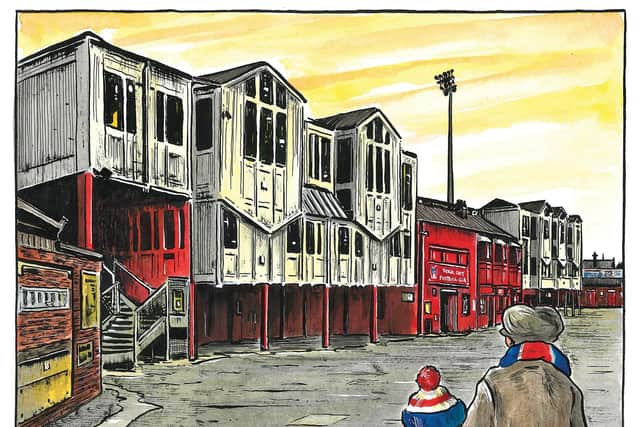

But for most, the pièce de résistance arrived on January 26, 1985 on a chilly, snowbound afternoon that warmed the soul.
John Motson – complete with trademark sheepskin coat – and the Match of the Day cameras were there and so were 10,840 others to watch a York side who cost £19,000 face a £4.5m Arsenal line-up featuring eight internationals in a round-four FA Cup tie which entered folklore.
Keith Houchen’s love affair with the Cup began when he coolly stroked home a 90th-minute penalty in front of an ecstatic Shipton Street End – the cue for ‘Motty’ to take over.
Advertisement
Hide AdAdvertisement
Hide Ad“And he’s done it... York City of the third division have put out the Arsenal. And it’s 1955 all over again,” he excitedly exclaimed.
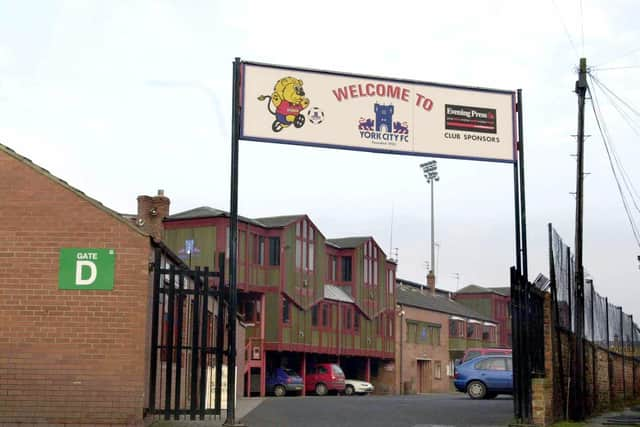

Motson’s legendary eye for detail in that nod to the mid-Fifties rewound the clock for those seasoned fans who were also around when York penned one of the most compelling chapters in FA Cup history.
Much earlier, York had laid down a marker in reaching the quarter-finals, taking Huddersfield Town to a replay with a record crowd of 28,123 attending the first tie at the ground in March, 1938.
That ‘Happy Wanderers’ side of 1954-55 – whose class included the ultra-consistent Tommy Forgan between the posts, speedy winger Billy Fenton and the prolific duo of Arthur Bottom and Norman Wilkinson – eclipsed these feats when they then went on to reach the semi-finals.
Advertisement
Hide AdAdvertisement
Hide AdAfter claiming the scalp of Stanley Matthews’s Blackpool in round three, York dispensed with Tottenham Hotspur 3-1 two rounds later in front of 21,000 enraptured fans on home soil – with the Pathe News footage of that day in February, 1955 being wonderfully evocative.
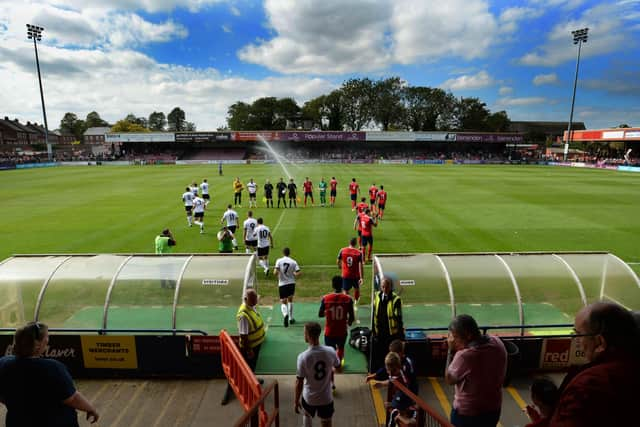

The newsreel announcer hailed the ‘little team with the big heart’; a time when York were the talk of the land. Not for the last time at Bootham Crescent.
Two more famous names of the day in Sunderland and Bolton would later be grateful for escaping with their Cup hopes still intact, with bumper crowds of 20,000-plus watching 0-0 draws in 1956 and 1958.
Those heady days dipped in the Sixties, but there were still numerous players to illuminate the terrain.
Advertisement
Hide AdAdvertisement
Hide AdThe goal-scoring nous of Paul Aimson would first come to the fore and two future international forwards in Ted MacDougall and Phil Boyer emerged on the scene in an era when the redoubtable Barry Jackson was a constant.
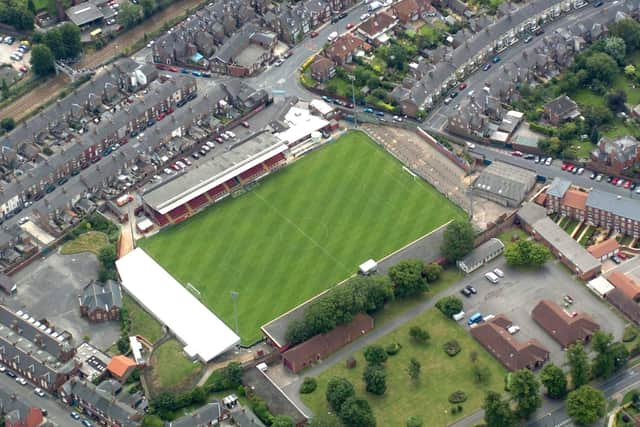

Like the Fifties, the mid-Seventies was a time of feast at Bootham Crescent, much like the mid-Eighties would also be.
A city famed for its confectionary, the assortment of names to visit in the club’s historic two-season spell in the second-tier between 1974-76 – Manchester United, Aston Villa, Nottingham Forest and Sheffield Wednesday to name a few – was as appetising as a box of All-Gold.
York’s iconic maroon shirts with that famous white Y-front design – a time when Barry Lyons, Brian Pollard, Chris Jones and Jimmy Seal held court and Barry Swallow and Chris Topping repelled intruders at the back –added to the uniqueness.
It was a time when York thought big.
Advertisement
Hide AdAdvertisement
Hide AdThere was talk of a railway halt for away fans, the pitch being turned 90 degrees and a double-decker stand being built on the Popular Stand, seated in 1974 when seats were bought from Manchester City.
It was the infamous arrival of the ‘Red Army’ of Manchester United which prompted the switching of home fans from the Grosvenor Road End to the Shipton Street End.
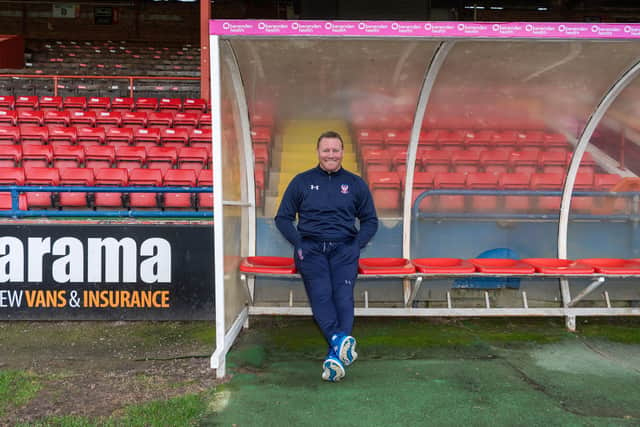

It would become a permanent change.
Sadly, York’s spell in Division Two was a brief hiatus and it took the arrival of Denis Smith to usher in more glory days almost a decade on with one of the most legendary sides in lower-division history taking the stage.
City would make history in 1983-84 by becoming the first side to amass 100 points en route to the Division Four title – with feted episodes arriving at Bootham Crescent against Halifax, Hartlepool and Bury.
Advertisement
Hide AdAdvertisement
Hide AdIt was the time of Roger Jones and two craggy Scots whose defensive axis was legion in John McPhail and Ricky Spragia.
But most of all, it was the time of a peroxide-blond artist in John Byrne and a lionised striker who proved to be one of the best that the lower leagues has probably ever seen. The late, great Keith Walwyn.
Another forward in Houchen would hog the limelight in that celebrated Cup win over Arsenal, and Spragia famously secured an Anfield replay after York pushed European Cup champions Liverpool all the way in a 1-1 draw in the fifth round of 1984-85.
An encore arrived the very next season, with a disputed penalty from Jan Molby rescuing the Reds after Gary Ford gave York the lead in another 1-1 draw – credited as Liverpool’s toughest assignment en route to Cup glory in 1985-86 and the second part of a league and cup double.
Advertisement
Hide AdAdvertisement
Hide AdAmid the Bootham Crescent tale, however, there is also sorrow.
Striker David Longhurst would suffer a heart attack and tragically die during a league game against Lincoln City on September 9, 1990.
A roof was erected at the Shipton Street End and the David Longhurst Stand was officially opened in October 1991.
God bless, David.
Comment Guidelines
National World encourages reader discussion on our stories. User feedback, insights and back-and-forth exchanges add a rich layer of context to reporting. Please review our Community Guidelines before commenting.